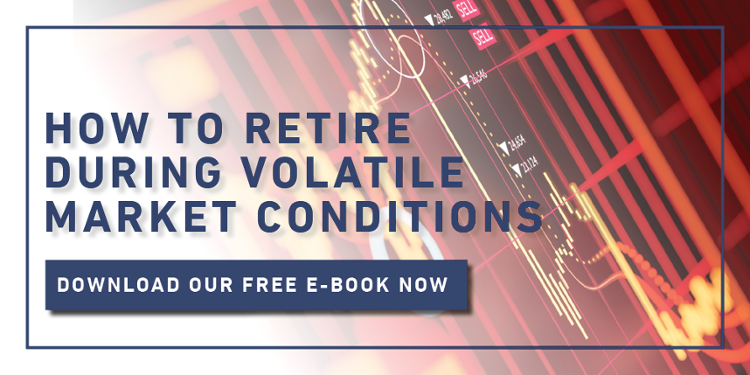15 Things to Have in Place Before You Retire
Ready to retire? Happy? Now?! Let’s find out.
The financial advisory team at PAX Financial Group has put together the following retirement planning checklist, which covers 15 important elements you should have in place before you retire.
Of course, this list is not exhaustive. No two retirements are exactly the same. There are special considerations for business owners. There are emotional aspects to consider.
If your retirement date is fast approaching, review this checklist and then schedule a no-obligation retirement checkup with the team at PAX Financial Group to discuss your results.
Getting close to retirement? Schedule a complimentary financial checkup with the team at PAX Financial Group.
Retirement Planning Checklist
A budget is an important financial planning tool, regardless of where you are in your financial journey, and this won’t change in retirement. Once you pivot into retirement, a budget can actually be even more important, since many retirees are on a fixed income. To make sure you don’t outlive your money, you’ll have to balance any money going out with the money you have coming in. Estimate your income and expenses, then set a plan (and stick to it!) so that you don’t withdraw more from your retirement accounts than you need or spend more than you can afford to. Read our recent blog post: Where Will Your Retirement Money Come From?
2. Plans for the day-to-day – What will your average Tuesday look like when you retire? Do you have a hobby you want to spend more time with? Will you look for a part-time job or volunteer work? Do you have big travel plans or hope to visit with friends and family? While many pre-retirees have specific trips in mind, oftentimes they have no idea how they’ll spend a normal day – and when you’re no longer working, there will likely be a lot of those. Read our recent blog post: How to Structure Your Day in Retirement … And What It Takes to Get There.
3. A withdrawal plan from your retirement accounts – Making withdrawals will be a little different in retirement than you’re used to. Accessing cash will be more than just hitting up the ATM. There are withdrawal rules, Required Minimum Distributions (RMDs), taxes and penalties to consider, and as we mentioned above, you don’t want to withdrawal more from your retirement accounts than you need to. Don’t forget, you’re entering the draw-down period now, so you can’t afford to run out of funds! Read our recent blog post: Classes on Retirement Planning Can Be a Huge Help.
4. A plan for Social Security – In order to get the most out of your Social Security benefits, it’s important to understand how Social Security works. For example, you can begin receiving payments at age 62, but if you’re able to hold off on receiving benefits a few more years, the amount you receive will increase by up to 8 percent per year. If you haven’t already, you can create an SSA account to apply, estimate your benefits and get a free Social Security report. For more on Social Security, read our recent blog post: 5 Surprising Facts You Didn’t Know About Social Security.
5. A handle on your debt – It can be helpful to pay off any debt you have before you retire, especially larger loans and high-interest debts like credit cards. Paying toward big financial liabilities, such as mortgages, student loans and credit card debt, during retirement can take a big chunk of your retirement income. Read our recent blog post: Why You Should Pay Off Your Mortgage Early (And How to Do It).
6. An emergency fund – Just like a budget, the importance of maintaining a rainy-day fund doesn’t magically disappear when you retire. If anything, you may want to be more prepared for the unexpected in retirement, when surprise expenses can have a more significant impact financially, because you’re living on a fixed income. Similar to before retirement, set aside enough to cover about six months of expenses, just in case, if possible. Read our recent blog post: Do You Have an Emergency Fund?
7. An estate plan – When it comes time to retire, you may have already established an estate plan, but when was the last time you reviewed it? Is it complete? Are your assets and beneficiaries current? Will your estate plan need additional changes once you retire? If you don’t have an estate plan yet, now is the time! Read our recent blog post: Estate Planning San Antonio: How to Help Your Family Financially Through a Trust.
8. Healthcare coverage – When you leave your job – and health insurance – behind, will you be eligible for Medicare? If you’re not at least 65 years old, make sure to plan and budget for independent healthcare coverage until then. And keep in mind that basic Medicare doesn’t cover all healthcare-related expenses, so even when you are eligible for Medicare, you may want to pay for additional coverages. Read our recent blog post: Everything You Need to Know About Retirement Healthcare.
9. An idea about your life expectancy – The longer you live, the longer your money will need to last. Although you can’t know for sure what age you’ll live to see, you can form a pretty reliable estimate based on your health, family history and a few other factors. Having even a general idea of how much money you’ll need in retirement can help you budget to make your money last. Read our recent blog post: 5 Steps to Help Ensure You Won’t Outlive Your Income.
10. A plan for inflation – Prices go up over time. This, in oversimplified terms, is known as inflation. When you’re on a fixed income and your retirement accounts are earning less than the rate of inflation, it’s important to have a plan, or you risk busting your budget and/or your bottom line. For many retirees who don’t consider inflation into their retirement plans, the solution is returning to work. Read our recent blog post: How to Structure Your Day in Retirement: Should it Include Working Part-Time?
11. A plan for taxes – Your tax strategy will likely change once you retire, and you may even move into a different tax bracket. Without understanding your tax liabilities and how tax ramifications can vary from one type of account to another, you risk not being tax-efficient. Keep more of what is yours. Read our recent blog post: Seniors: Here’s a Tip to Lower Taxes While Giving to Charity.
12. A discussion with your spouse/children/family/friends – Hopefully, you’ve had an in-depth conversation with your partner about when you’ll retire and what you plan to do then. But have you talked to your boss and coworkers about your retirement plans? Or with your family and friends about how your lifestyle might change, and how those changes may affect them? Are your children and grandchildren aware of your long-term care plans? Read our recent blog post: ‘Just In Case’ Preparation – Estate Planning for You and Your Family Members.
13. An idea of where you will live – Are you planning to move north after you retire? If your plans include relocating, remember to consider the differences in real estate, costs of living and tax laws. Retirement planning in San Antonio looks different than retirement planning in other areas. Read our recent blog post: Top 8 Reasons Why San Antonio is a Good Place to Retire.
14. Goals for your Golden Years – Retirement is your time to see the world, complete your bucket list or, well, do nothing at all, if that’s what you’ve always dreamed of. Together with your spouse, map out all the things you hope to do and accomplish once you retire, so you can make a plan for when and how to do them, as well as how you’ll pay for them. You can also refer to this list when you get bored or restless. Read our recent blog post: One Tip that Can Help You Avoid Retirement FOMO.
15. A relationship with a fiduciary financial advisor – If you don’t already have a financial advisor you trust, don’t wait another day to find someone to help you address all of your retirement planning needs and make the financial transition into retirement as smooth as possible. Remember, not all financial advisors are the same. Read our recent blog post: What’s a Fiduciary and Why Do You Need One in 2021?
Putting It All Together
There are items on this checklist that may not apply to everyone. For example, if you don’t have any big, outstanding balances, then you won’t have to worry about getting a handle on your debt. Or if you plan to stay in the same house after retirement, then you can just cross off “an idea of where you will live.”
Likewise, it’s possible there are concerns we haven’t mentioned that might be important to your situation. Remember, everyone’s retirement plans are unique! Which is why it can be so beneficial to build a trusting relationship with a financial advisor who can offer advice, keep you on track, answer questions and help you create and complete your personal retirement checklist.
If you’re currently looking for help with your retirement planning in San Antonio, contact the team at PAX Financial Group. We’re here to help.
This material is provided by PAX Financial Group, LLC. The opinions voiced in this material are for general information only and are not intended to provide specific advice or recommendations for any individual. The information herein has been derived from sources believed to be accurate. Please note: Investing involves risk, and past performance is no guarantee of future results. Investments will fluctuate and when redeemed may be worth more or less than when originally invested. This information should not be construed as investment, tax or legal advice and may not be relied on for the purpose of avoiding any Federal tax penalty. This is neither a solicitation nor recommendation to purchase or sell any investment or insurance product or service, and should not be relied upon as such. All market indices discussed are unmanaged and are not illustrative of any particular investment. Indices do not incur management fees, costs and expenses, and cannot be invested into directly. All economic and performance data is historical and not indicative of future results.




